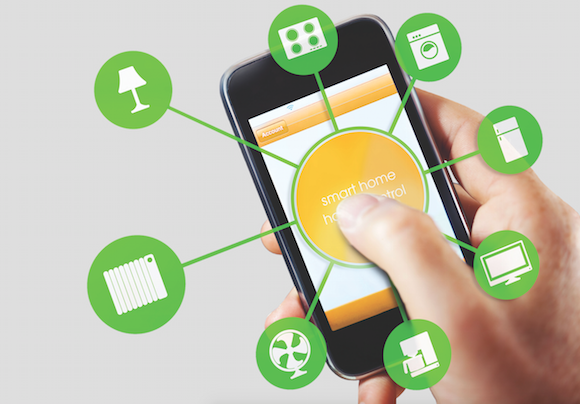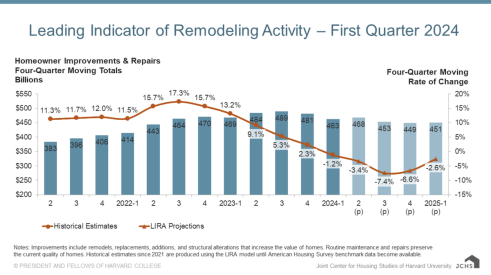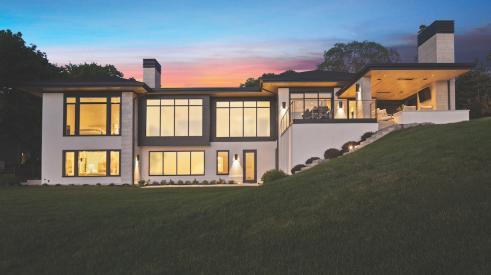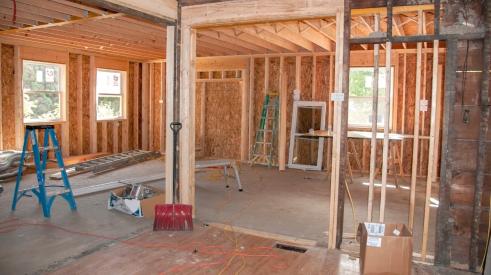Ten years ago the advice to builders and remodelers was to “future proof” homes with an expensive cable infrastructure that connected data ports in every room to a central box. In some homes, the box housed a server feeding proprietary electronic controls and devices throughout the home—not exactly a setup for the masses.
A decade later, things look radically different. Remodelers today can offer the benefits of technology to the average customer.
The difference, of course, is that electronic gadgets are now wireless, controlled by an app, and are inexpensive compared with the pricey systems of the ’90s and early 2000s.
Yet, unfortunately, few remodelers are seizing this opportunity. A recent survey of 6,500 households published by Gartner, an information technology research group in Stamford, Conn., found that connected home devices—such as Wi-Fi–enabled lighting, smart thermostats, and security cameras that relay information to the homeowner’s smartphone—still only appeal to a niche segment of the high-income market. The researchers believe that few vendors or contractors are making a convincing case for the value that these devices can add to customers’ lives.
Selling Value
Remodelers who have learned to make the case for connected home systems believe it gives them a competitive edge. But they stress that enthusiasm for connected devices (with some exceptions) varies with the customer’s age.
While many see great interest in connected home technology among those aged under 40, most homeowners in the market for remodeling fall above this age range. For the over-60s, that value is a tougher sell. In some cases, those in the affluent niche identified by Gartner in the 40-to-60-year-old cohort only request a few things. “They mostly want the ability to monitor thermostats and to remotely control security systems,” says Ralph Cataldo, a custom builder and remodeler on Cape Cod, Mass. These items are must-haves for customers with second homes on the Cape.
But as young people mature and enter the remodeling market, the demand for technology will grow. Those people will seek remodelers who have as much knowledge about technology as they do about flooring and cabinetry, which is why Cataldo invests time in educating himself about new technologies. “When I attend shows like the International Builders’ Show, I spend a lot of my time with the technology vendors learning about their offerings,” he says. “I see this as a big thing in the near future.”
Expanding Reach
“Even people in their 30s or 40s who are not electronic DIYers tend to need help sorting through the choices,” says Jim Kabel, owner of Case Design/Remodeling, in San Jose, in the heart of California’s Silicon Valley. “We’re seeing a need to stay educated, so we have the knowledge to advise them.”
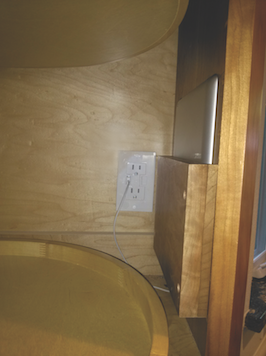 Some industry pros are combining this knowledge with more attractive pricing to expand the niche beyond the affluent and tech savvy. One of these is Ed Webb, owner of Koncerted, a “digital concierge” in the Boston area whose business includes installing systems as well as training architects and contractors. He says that wireless is starting to put connected home technology within reach of the average household. “I used to run a high-end installation company, installing home automation systems with prices of $100,000 and up,” Webb says. “Today, I can offer more functionality for one-tenth the price, using wireless devices controlled by an iPad or iPhone.” His controller of choice: the iPad mini. Koncerted keeps all systems as an open architecture. When a new app comes out, the user simply downloads it and is off and running. It’s easy and economical.
Some industry pros are combining this knowledge with more attractive pricing to expand the niche beyond the affluent and tech savvy. One of these is Ed Webb, owner of Koncerted, a “digital concierge” in the Boston area whose business includes installing systems as well as training architects and contractors. He says that wireless is starting to put connected home technology within reach of the average household. “I used to run a high-end installation company, installing home automation systems with prices of $100,000 and up,” Webb says. “Today, I can offer more functionality for one-tenth the price, using wireless devices controlled by an iPad or iPhone.” His controller of choice: the iPad mini. Koncerted keeps all systems as an open architecture. When a new app comes out, the user simply downloads it and is off and running. It’s easy and economical.
[Kristie Schneider, with Case Design/Remodeling, in San Jose, Calif., designed a receptacle inside the kitchen cabinet to keep the client’s iPad charged but out of sight.]
And although temperature and security remain the hottest-selling product categories for Webb, consumers are also becoming more receptive to other products. “My lighting control business is up 250 percent this year,” he says. “My automated shade business is up 200 percent.” The reason? “Two years ago a remote-controlled shade sold for $2,000 plus the cost for installing and wiring it,” Webb says. “Now you can get one that’s powered by D-cell batteries with an installed cost of $800 to $1,000.”
Even at the lower price points, however, being able to clearly explain the benefits of the different applications is the key to selling them. “Asking people if they want remote control of their thermostat isn’t very compelling,” Webb says. “Asking them if they would like the ability to turn up their home’s heat before leaving the office so that they don’t have to come home to a cold house gets their attention.”
To Wire or Not to Wire?
With so many products going wireless, maybe it’s time to stop data-wiring homes altogether. Not so fast, experts say. It’s still a good idea to run cable to every room for bandwidth-hungry streaming video services such as Netflix, iTunes, or Comcast, Webb says, but he no longer uses expensive structured cable, preferring instead to run the data wire and coax separately.
“You can get 1,000 feet of Category 6 wire for about $120 to $150, and it’s easy to install,” he says. However, it’s still important to avoid daisy-chaining, as each connection lowers the cable’s bandwidth capacity, he cautions. Instead, there need to be home runs from where the phone and Internet signals enter the house to each of the TV and data boxes.
For the growing number of wireless devices, Webb recommends an enterprise-grade router ($400 to $1,000 with 5 gigabytes of onboard RAM, as compared with 56 kilobytes of RAM for a typical $50 to $100 consumer-grade router), as well as high-powered wireless access points (WAPs) to ensure a strong signal in all parts of the house. “Wireless repeaters are awful,” Webb says. “WAPs are a much better solution.”
Whatever the home’s infrastructure, all remodelers can look for small ways to accommodate their customers’ use of technology. For instance, many people charge their phones and tablets in the kitchen, so Kabel now installs AC/USB wall outlets, such as Power-2U from NewerTech, in the kitchen area. “We can put them wherever a typical receptacle would be installed, but because the units have built-in AC-to-DC power adapters, they take up more room in the junction box and can’t be used where a larger number of power cables pass through the box or are terminated in the electrical run.” He usually installs the AC/USB outlet at the end of an island, at a counter area, or a desk, recipe, or bill paying station in the kitchen.
Kabel also looks at how customers use their devices. A recent customer liked to cook from recipes displayed on an iPad but wanted the device off the kitchen counter. The designer came up with a niche in the side of a cabinet to hold the iPad, with a receptacle hidden inside the cabinet to keep it charged. PR
--
Charlie Wardell is a freelance writer and former remodeler in Tisbury, Mass.
Read More About Home Automation
A better/best comparison of several smart home products
How some builders are navigating their way through the home automation maze
New technologies offer real opportunity for remodelers, but few are tapping that potential. We show you how to take advantage
Add new comment
Related Stories
Harvard Says Remodeling Spending Downturn to Slow
Could the drop in remodeling spending from post-COVID levels regulate soon?
Power Home Remodeling Now Offers Subsidized Childcare
The home improvement giant's move seeks to address a greater industry issue
Contractor Facing Lawsuit in ‘Major Case’ by Ohio Attorney General
An Ohio custom builder and remodeler faces a lawsuit after alleged losses exceeding $1 million
Learn from the Best in Home Improvement and Remodeling
This year’s Pinnacle Experience aims to help remodelers stay ahead of their competitors by featuring captivating keynote speakers and subject matter experts, collaborative roundtable discussions, and networking with proven players from across the country.
Registration Open for The Pinnacle Experience 2024
Register today for The Pinnacle Experience 2024 in Baltimore from June 26-28. Join the best and brightest in home improvement and remodeling for insight, advice, and relationship-building that will help you take your business to new heights.
Marvin Releases Switchable Privacy Glass Window
The privacy glass windows can be purchased from Marvin's Direct Glaze windows
Gas Ban in New Construction Considered by Chicago
The mayor-backed ordinance would impact all new construction
Working Toward Affordable, Resilient Homes
A new natural disaster protection act from NAHB aims to support hazard mitigation projects
The Remodeling Market Could Turn in Q4, Says Harvard
Repair and remodeling spending could see an uptick at the end of the year
Seattle Contractor Finds Grenade During Remodel
Polar Bear Construction Owner Vadim Kharkhavyy and the owner were equally shocked



